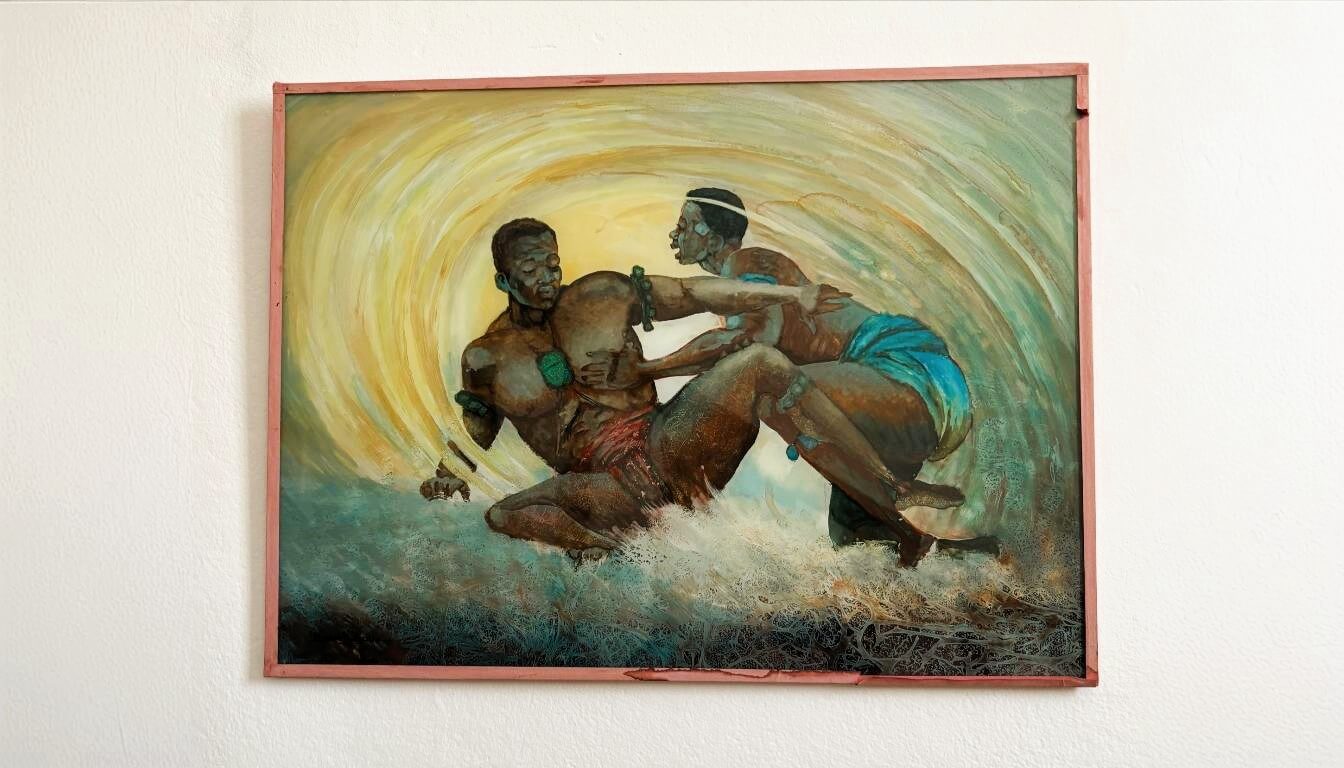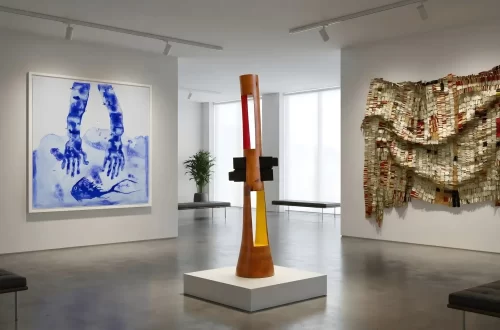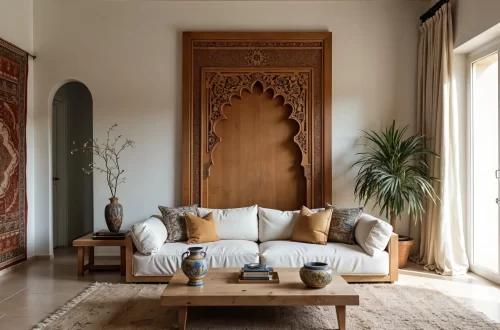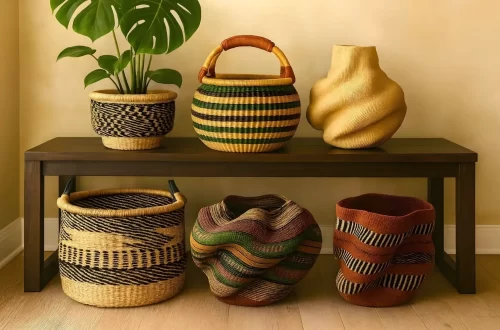Rooted in Senegal’s dynamic artistic legacy, reverse glass painting transforms simple glass into scenes bursting with life—markets brimming with activity, serene natural landscapes, or striking portraits with distinctive designs. These pieces, created by painting on the back of glass, are as captivating for their technique as they are for their beauty.
Growing up in Senegal, I was fascinated by the vibrant reverse glass paintings that adorned our home. My mother’s collection, a kaleidoscope of colors and stories, felt like windows into another world. Their storytelling power was undeniable.
This article takes you into the world of reverse glass painting—its techniques, the stories it tells, and the lasting mark it has left on Senegalese art. Let’s explore how these pieces bring depth and character to any setting.
In this article:
- What Is Reverse Glass Painting? A Beginner’s Guide
- The Story of Reverse Glass Painting in Senegal
- Reverse Glass Painting in Home Decor
- Top Senegalese Reverse Glass Artists
What Is Reverse Glass Painting? A Beginner’s Guide
Reverse glass painting is exactly what it sounds like: painting in reverse. Unlike regular paintings where glass might sit on top as protection, here the glass is the canvas. The artist paints directly on the underside of the glass, with the finished image revealed when the piece is flipped over.

What does that mean in practice? A lot. Painting in reverse flips the creative process on its head. Instead of working from rough shapes to fine details, artists do the opposite. They paint the delicate details first, followed by the broader strokes. Light colors come before dark ones, and every layer builds on the next, starting with the foreground and ending with the background.
To give you a better sense of the process, imagine this: The artist starts by painting the smallest details, like the intricate lines of a person’s face or the delicate edges of a flower. Next, the artist works backward, adding broader elements like larger patterns or objects. Finally, the background colors are painted last, creating depth and framing the foreground.
Because of this, artists need a clear vision of the final piece before the first brushstroke. There’s no room for second-guessing or last-minute touch-ups. Yet, despite these challenges, the precision and artistry they achieve are nothing short of remarkable.
The Story of Reverse Glass Painting in Senegal
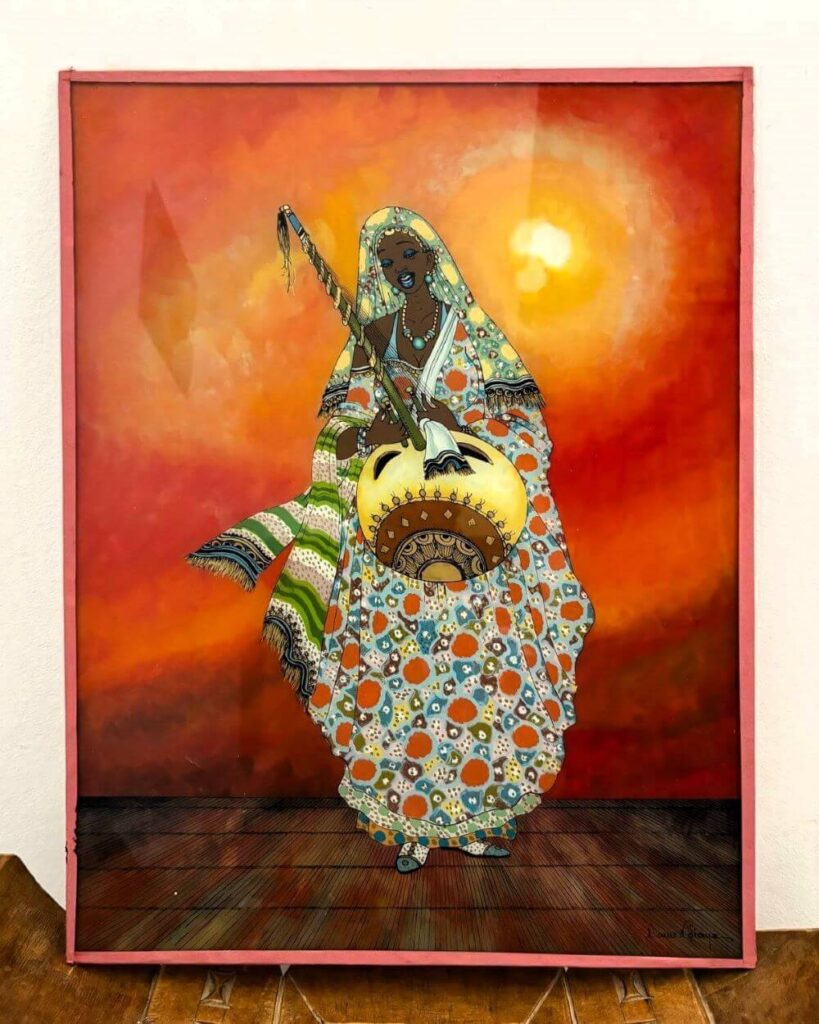
Reverse glass painting has ancient roots, dating back to antiquity. It made its way to Senegal in the late 19th century, brought by influences from Northern Africa, particularly Tunisia. While many countries that once embraced this technique have since moved on to other styles, Senegal remains a proud guardian of the art form, with reverse glass painting still thriving today.
Locally, it’s known as Souwer, a name derived from the French “sous-verre,” which literally means “under-glass.” This term perfectly captures the essence of the technique: painting on the underside of glass to reveal the image when flipped over.
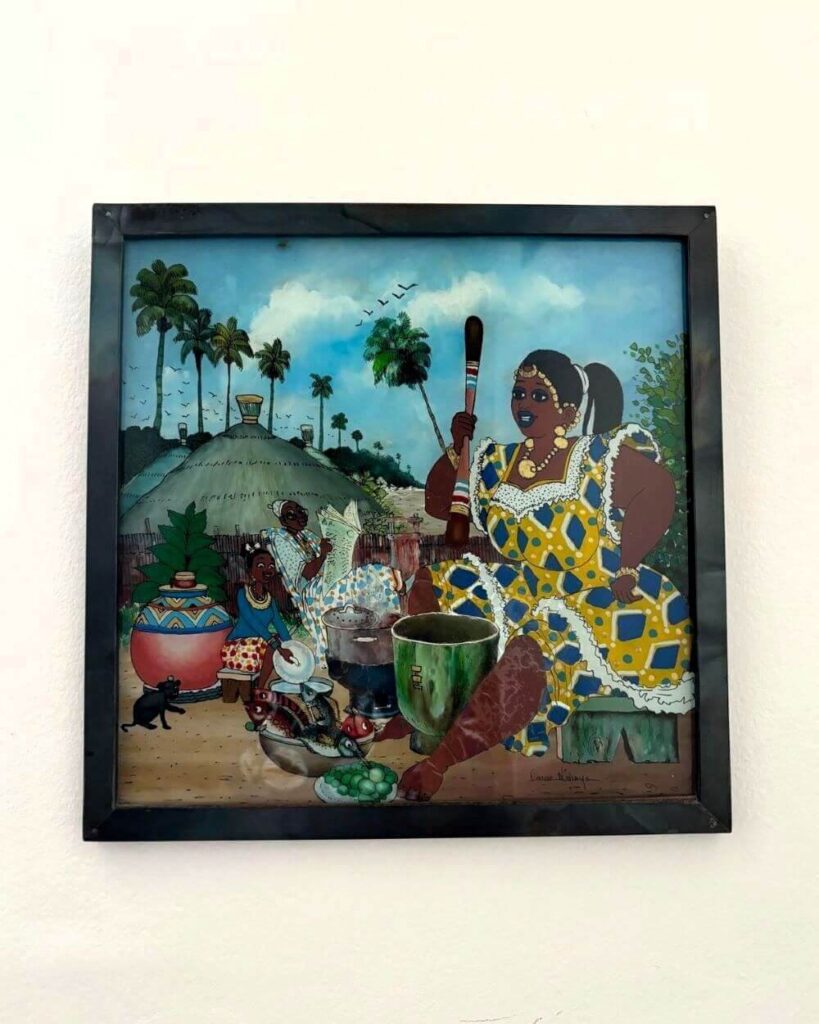
Historically, Souwer painting in Senegal had deep spiritual significance, often portraying religious scenes and symbols tied to Islam. Over time, however, the subject matter evolved. Artists began capturing more secular scenes, reflecting the vibrancy of everyday life in Senegal—griots performing at celebrations, women cooking traditional dishes, men casting their nets on the ocean, and more.
The art truly boomed after Senegal gained independence in 1960, as the country became a popular destination for tourists seeking authentic souvenirs. Today, Souwer paintings are still in high demand, cherished not only by visitors but also deeply appreciated by the local population, keeping the tradition alive and evolving.
Reverse Glass Painting in Home Decor
1. Interior Styles that Embrace Reverse Glass Painting
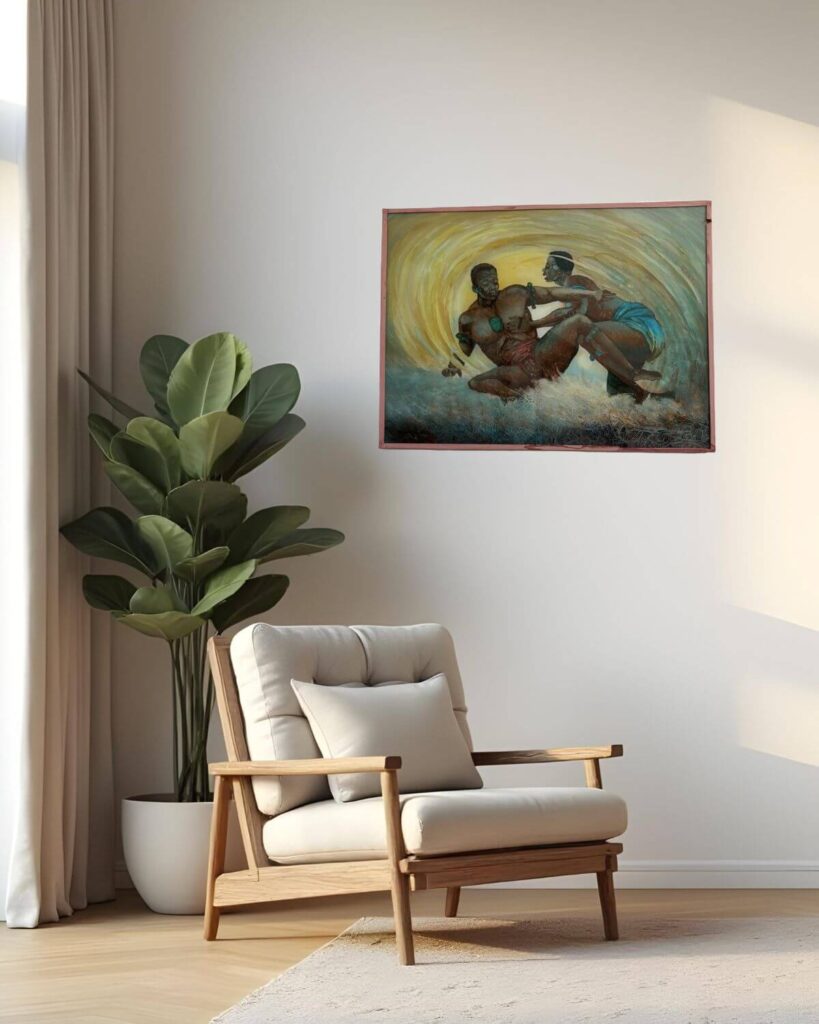
Reverse glass paintings are chameleons in the world of decor. Their vibrant designs carry just the right touch of sophistication to fit a range of interiors. Got a minimalist or neutral space? These pieces are your secret weapon for injecting a touch of color and a bit of soul. Prefer a colorful palette? They either play along beautifully or create a contrast so striking it demands a double take.
The sleek, glossy surface of the glass fits wonderfully in modern and contemporary settings. However, they may not be the best choice for those seeking an ultra-organic, neutral-based space. Plus, they certainly need room to shine—so they might get lost in a maximalist layout.
2. Ideal Spaces to Showcase Reverse Glass Paintings
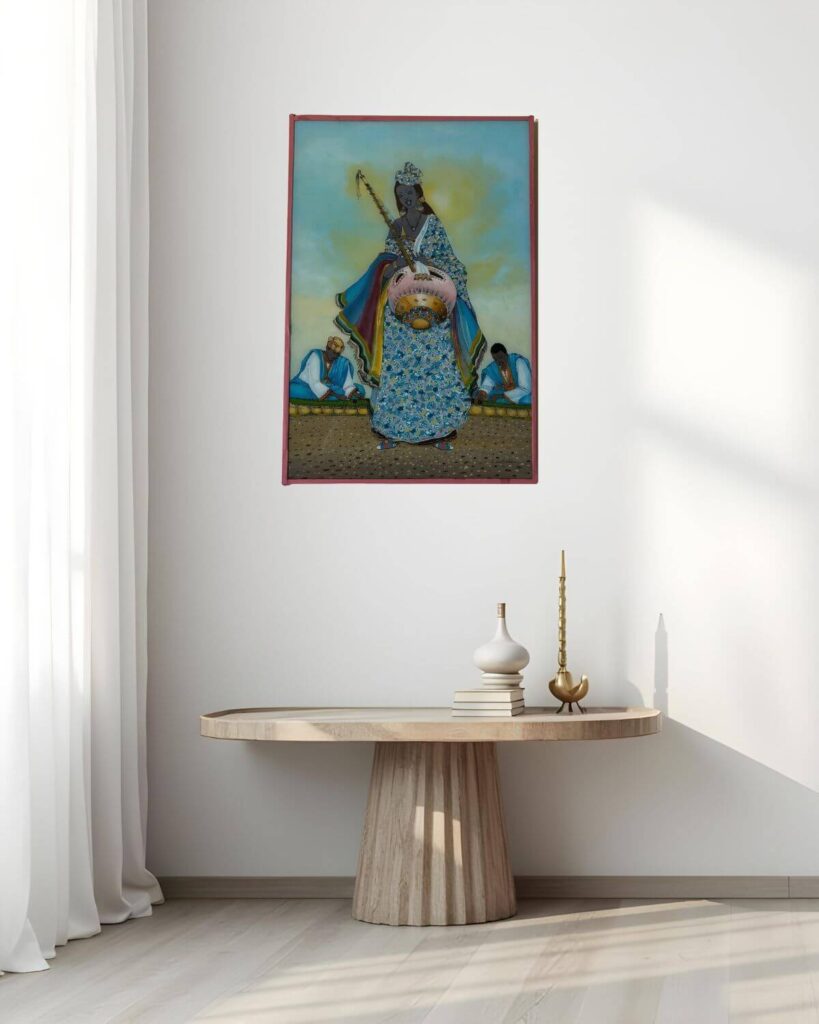
While reverse glass paintings can really go anywhere, they shine brightest in spaces where they can tell a story. Imagine one greeting you at the entryway, setting the tone as soon as you walk through the door. They also make great companions for hallways, adding personality to every step you take.
Want something more personal? Try a cozy nook. Maybe it’s your reading corner, a spot for journaling, or just a little escape where the world slows down. Here, a reverse glass painting can transform into your daily muse—a spark of creativity or a portal to a different world.
3. Finding the Perfect Reverse Glass Piece for Your Home
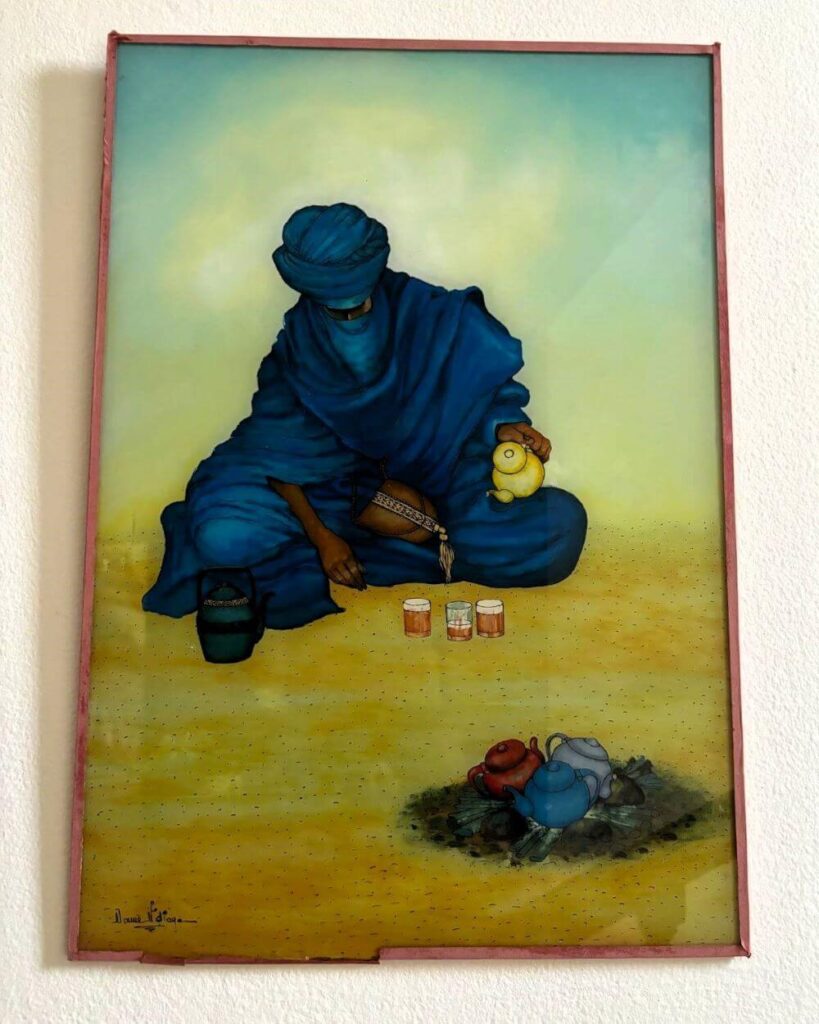
Here’s where it gets personal. If you’re drawn to pieces with presence, go for a portrait. These aren’t just decorations—they’re characters that bring life to your space, almost like honorary family members. They’re usually smaller, making them ideal for gallery walls or eclectic collections.
Craving a story? Look for scenes of Senegalese life—markets bursting with color, fishermen casting nets, or musicians bringing the streets alive. These pieces capture the vibrancy of everyday moments, adding a sense of nostalgia and depth to your home.
And for the nature lovers? Senegal’s flora and fauna come to life on glass, bursting with tropical energy. These are a match made in heaven for plant-filled homes or spaces with a jungle vibe.
Top Senegalese Reverse Glass Artists
Gora Mbengue
Gora Mbengue was a leading figure in contemporary reverse glass painting, known for his intricate and vibrant works that depicted both Islamic history and Senegalese culture. His most iconic piece, Al-Buraq (1975), is housed in the Brooklyn Museum. It portrays the winged horse al-Buraq, a significant figure in Islamic tradition.
Mor Gueye
Mor Gueye is a master of reverse glass painting, celebrated for his bold, emotional works that blend spirituality with the everyday life of Senegal. His pieces often depict figures from Senegalese folklore and Islamic traditions. One standout piece features Mami Wata, the mermaid spirit, whose image is brought to life with rich colors and intricate patterns. His work continues to captivate art lovers both in Senegal and beyond.
Alexis Ngom
Born in 1957 in Senegal, Alexis Ngom is a celebrated reverse glass artist. His works often explore themes of Senegalese life and folklore, skillfully brought to life on glass. Noah’s Ark (1986) is one of his iconic pieces, showcasing his talent for storytelling. Ngom’s art has earned international recognition, with his works featured in collections such as the Royal Museum for Central Africa. His contributions continue to shape the world of African art to this day.
Honorable Mentions
While Gora Mbengue, Mor Gueye, and Alexis Ngom stand as pillars in the world of reverse glass painting, many other talented artists contribute to this vibrant tradition. Magatte Ndiaye, Fallou Dolly, Babacar Lo, and Birahim Fall (Mbida) were important parts of this generation, each bringing their own style and depth to the medium.
The younger generation, including Jules (Souleymane Dione), Gabou (Gabriel Balacoune), and Khaly (Papa Khaly Diop), are pushing the boundaries of reverse glass painting, experimenting with fresh themes and innovative techniques while staying rooted in the heritage of this beautiful Senegalese art. Their pieces promise an exciting future for this art form.
Reverse glass painting carries the heart of Senegalese culture.
These mesmerizing works blend fine skills with stories that linger long after the first glance. They reflect the hands and vision of their makers, preserving a tradition both timeless and dynamic. As you explore their layers—of glass, of color, of meaning—you step into a legacy that continues to evolve and inspire. What stories might it tell in your own space?
If you enjoyed this article, you’ll love discovering the Timeless Treasure of African Pottery.

